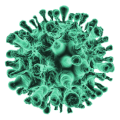Milk, yogurt and cheese:
This group is essential for the incorporation of calcium and its contribution to proteins, zinc, and vitamins. It is recommended that they be preferably skim to reduce their fat content.
How much is the portion? Three servings a day are recommended, for example, a cup of milk + a pot of yogurt + a matchbox-size piece of fresh cheese.
Meats and eggs:
This group is an excellent source of protein and iron.
How much is the portion? The recommendation is once a day a medium-sized serving of meat from the palm or an egg. You also have to consider the frequency; you should include fish two or more times a week, other white meats two times a week and red meat up to 3 times a week.
Oils, dried fruits and seeds:
This group provides essential fatty acids, commonly called good fats, and proteins, vitamins, minerals, and fibre.
How much is the portion? The recommendation is two tablespoons of oil per day, preferably raw. You can also add a handful of unsalted dried fruit and a tablespoon of unsalted seeds. It is essential to respect these amounts as they are a more concentrated energy source than other foods.
Optional: sweets and fats:
This group is called “optional” since they are not essential to consume, and when they are incorporated, small portions should be chosen. This is because they provide excess calories and few nutrients; their frequent consumption predisposes them to obesity, hypertension, diabetes and cardiovascular diseases, among others.
Water:
Water has a central location on the graph due to its importance to health. The recommendation is to drink eight glasses of safe water daily.
“The fruit of a good diet is a healthy weight and a comprehensive state of well-being.”
Physical activity
Physical activity is considered to be anybody’s movement produced by skeletal muscles that require energy expenditure. With this definition, we can say that physical activity encompasses exercise and other activities that include movement and are carried out as part of moments of play, work, active forms of transport, domestic tasks, and recreational activities.
Regular physical activity is a habit that improves your quality of life.
Nutrients and balanced diet
Salad
Nutrients are substances contained in food, which are essential for the life of the body.
Food provides us with different types of nutrients:
carbohydrates or carbohydrates
proteins
fats or lipids
the vitamins
the minerals
Water
the fibreWhat are carbohydrates?
They are nutrients that are mainly found in plant foods. Its primary function in the body is to produce energy and act as an energy reserve.
There are two types of carbohydrates:
Simple, among which are sugar and foods that contain it (such as sweets, candies and soft drinks).
Complex (contained in cereals and their derivatives, potatoes and legumes).What are proteins?
They are made up of chains of amino acids, which the body uses mainly to build and repair tissues. They are found in foods of animal origin and lesser in foods of plant origin.
Animal proteins are considered higher quality than vegetable proteins since they contain all the essential amino acids in quantities and proportions required by man. The protein of animal origin is therefore of high biological value (PAVB). The protein of vegetable origin can be differentiated between those of medium biological value (PMVB) and those of low biological value (PBVB).
Protein classification AVB proteins MVB proteins BVB proteins
Meat
Fish
Egg
Milk and derivatives
Vegetables
Cereals
Nuts
Vegetables
Vegetables and Tubers
Fruits
What are fats or lipids?
They are nutrients that mainly provide energy to the body, facilitate the transport of some vitamins and are part of some hormones and cell membranes. They are found in both plant and animal foods.
They are classified into:
Saturated fats are mainly present in foods of animal origin, such as meat and derivatives, milk, and whole derivatives. Also, in pastries, pastries, and precooked meals made with coconut and palm fats.
Unsaturated fats: found in oily fish, seed oils, and nuts.Is water a nutrient?
Water is a nutrient
Water is the main component of our body. The human body is 75% water at birth and about 60% in adulthood. About 60% of this water is found in the interior of the cells, and the rest is the one that circulates in the blood and bathes the tissues.
In our body’s water, the reactions take place that allows us to be alive; it transports oxygen and nutrients to our tissues and removes the waste products of cellular metabolism from our body.
It is crucial to consume a sufficient amount of water each day for the proper functioning of the assimilation processes and, above all, to eliminate waste from cellular metabolism.
What is fibre?
Dietary fibre is the edible part of plants or analogous carbohydrates resistant to digestion and absorption in the small intestine, with complete or partial fermentation in the colon, promoting beneficial physiological effects.
It has several essential functions: they absorb water (up to 5 times its weight), increases the volume of stool, accelerates intestinal transit, etc.
A balanced and healthy diet
A balanced and adequate diet satisfies nutritional needs, which implies a correct supply of energy and nutrients for the proper functioning of the human body.
It is essential that the diet is varied to meet the nutritional requirements and that it is pleasant to the palate to avoid the monotony of the menus.
What are the nutritional requirements?
They are the amounts of every one of the nutrients we need to achieve a correct nutritional state.
The World Health Organization recommends:
50-55% carbohydrates
30-35% lipids or fats
12-15% protein
Determined amounts of fibre, vitamins and minerals.For this reason, we classify foods into different groups according to the nutrient that is found in the highest proportion.







